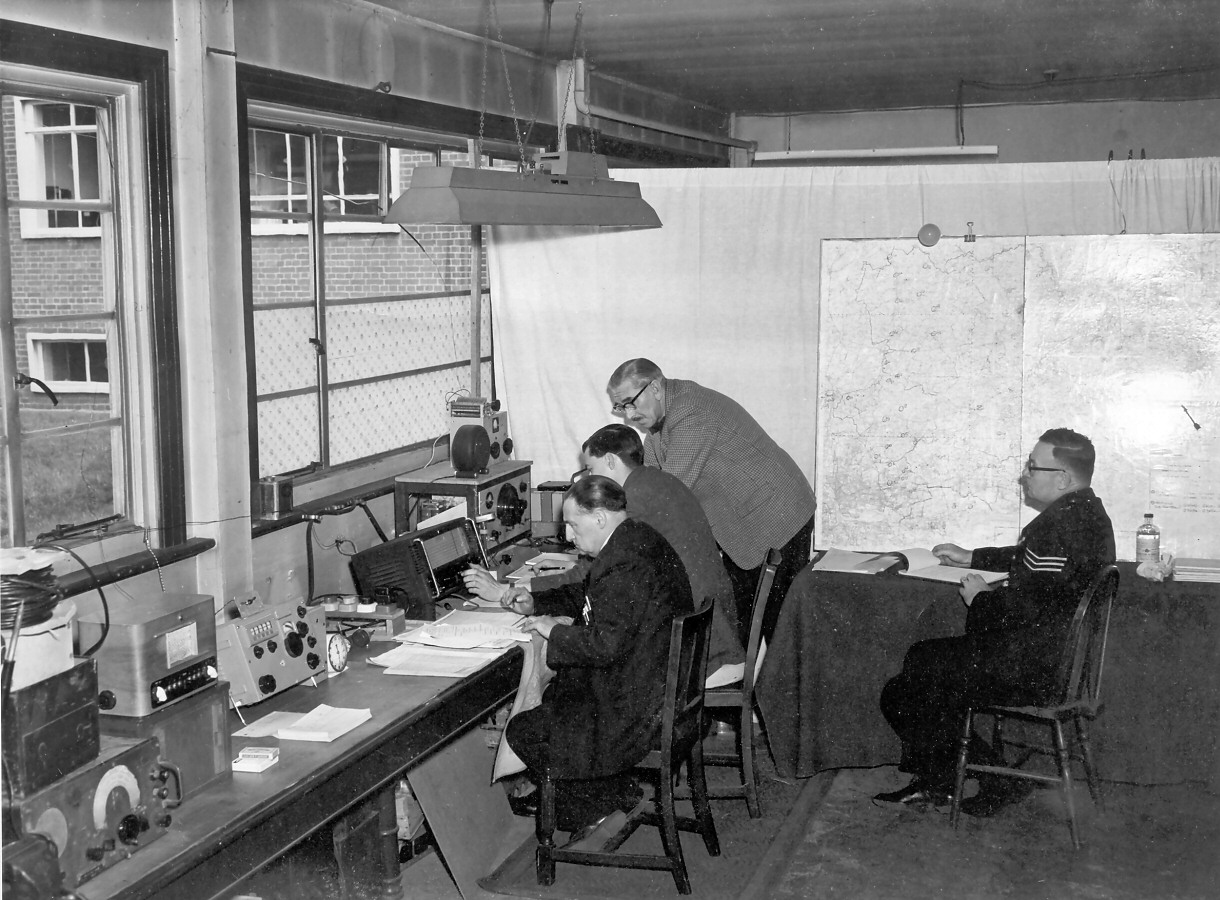 |
G0MWT, GX0MWT, GB5HF & GB100MWT
1958 Essex Floods |
 |
G0MWT, GX0MWT, GB5HF & GB100MWT
1958 Essex Floods |
Chelmsford Amateur Radio Society has a rich history. On 6th September 1958 CARS members who were part of the local Radio Amateur Emergency Network (R.A.E.N.) were called to assist in the Essex Floods. The rain storms occurred five years after the devastating 1953 East Coast & Canvey floods that had given rise to RAEN (which is now known as RAYNET-UK). It is believed to be the first ever RAEN/RAYNET emergency action.
Those involved included: C. H. L. Edwards G8TL, George Cutting G3GNQ, Harry Collin G2DQ, Harry Lowe G2HPF, Cliff Fenton G3ABB.
The account below is reproduced from the October 1958 edition of the RSGB Bulletin:-
The Network in Action
STORM-FLOODED Essex provided R.A.E.N. with its first ever emergency call out. The call came on September 6 following severe rain which made many roads impassable and played havoc with telephone lines over a wide area.During the late evening of Friday. September 5. Insp. Dyer. Chief of Essex County Police Communications Dept. tried to contact the Essex C.C. (Mr. C. H. L. Edwards G8TL) and other members, but so bad were driving conditions it was not until next morning that the first call was received by Mr. C. L Fenton G3ABB, who is located near to Chelmsford.
After warning the Chelmsford Area Controller (Mr. Cutting G3GNQ), G3ABB set up a station at County Police Headquarters. G3GNQ immediately alerted members of his group. Mr. Collins, G2DQ. was directed to Laindon Police Station. and Mr. Lowe, G2HPF (using G3BLA's equipment) went to Pitsea Police Station as both stations were out of contact with Police H.Q.
In the afternoon G3GNQ returned home and opened up as a relay station between control and out-stations, there being some QRM from teleprinters. G3KTF took over from G3ABB, who then went on reconnaissance, reporting flood situations and detours required. Later, G3ERN was alerted ror similar duties in the Harlow/Epping area. V.H.F. communications having been established by the police about 6.0 pm. R.A.E.N. mobiles were called in and operations closed.
In a letter to the Essex C.C. the Assistant Chief Constable of Essex (Mr. L. Nightingale) wrote:
" As you will be aware we were pleased to ask for the services of your R.A.E.N. members on Saturday last 6th September, in connection with the flood emergency. An attempt had been made on the previous evening to contact you at your house but, unfortunately, your line was out of order.On Saturday morning however as you were able to contact Mr Fenton, who attended police headquarters with several other members and set up a control station. A link was then established with our Laindon Station and members also provided road situation reports.
I should like to take this opportunity to express our thanks to yourself, Messrs. Fenton and Cutting and other members of R.A.E.N. whose rapid assistance in difficult circumstances was so efficiently provided."
Lessons Learned
During the time of the action the Essex C.C. was unable to contact members in Chelmsford either from his home or from London. It is obvious that a difficult situation arises when all means or normal communication, including roads, fail. It was fortunate that conditions enabled sufficient members to be called out once G3ABB had been alerted. In future this situation will be countered by making the fullest use of listener members, who, with licensed members will be given standing instructions to maintain watch on schedule whenever weather conditions warrant such action. Any member receiving an action warning from a user service would put out a call to activate the group with more than a reasonable chance of being successful. It has been found that listener members miss very little of what goes on, and when they receive an alert they can then warn other members in their area by means other than radio. The principle of schedule watch-keeping in bad weather has already been approved for the Western Trunk Route, and Lincolnshire Group has made full use of listener members for some years.Lesson No. 2 is that there is no such place as "safe area." As at Lynton, in N. Devon, the Essex flood was unexpected. It is true that certain parts of the affected area are subject to some flooding, but Chelmsford would be described as a safe place in which to live. In the past many amateurs have said "We live in a safe area so there's no need for R.A.E.N. here." Some areas are safer than others, without doubt, and amateurs living in such places are often well located to give aid to people less fortunately placed.
Lesson No. 3 is that practice in team-work pays off. Members used each others gear and were experienced in procedure and were able to devote their whole attention to the finer points of the operation.
( RAEN Notes & News by E.Arnold Matthews G3FZW, RSGB Bulletin October 1958 )

From left to right are: Eddie Edwards G8TL, Arthur Butcher G3KPJ, Dai Davies G3MWD, Reg Hodson G3PXR
This used AM on the 160 metre band. Half-way along the bench is a Marconi HR110 which was a 1950's version of the CR100 which used miniature valves (tubes).
Eddie G8TL was a RSGB Council member, chair of their Radio Amateur Emergency Network Committee and Essex Controller for R.A.E.N.
Nowadays:
Click here to go back to the TOP of this page.
To RETURN to the CARS Society Information Page - Click Here
To RETURN to the CARS Home Page - Click Here
© Chelmsford Amateur Radio Society, CARS